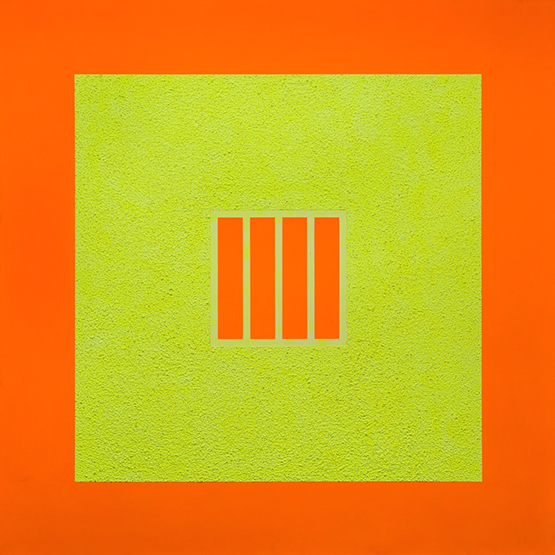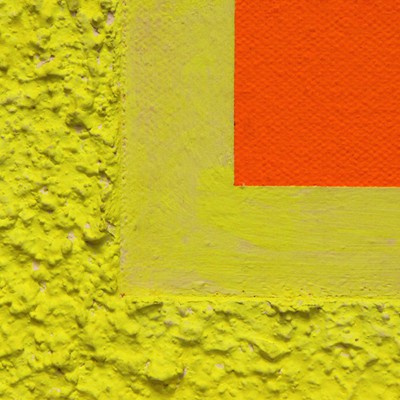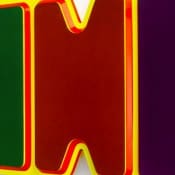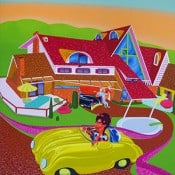Explore
![]()
Peter Halley
(American, born 1953)
Yellow Prison with Orange Background, 1985
acrylic and Roll-a-Tex™ on canvas, 63 x 63 inches
Artwork courtesy of the Artist
As an artist, writer, and teacher, Peter Halley has been an influential force in the contemporary art world for several decades. He first gained widespread attention in the 1980s for his vibrantly colored geometric paintings, becoming a leading figure of a postmodern movement in cultural abstraction, or what some critics nicknamed “Neo-Geo” (short for “new geometry.”) Halley, who grew up in a Manhattan high-rise, often makes explicit references to modern architecture in his work as exemplified by his use of “popcorn ceiling” texture once popular in residential construction. The titles of his paintings, such as Yellow Prison with Orange Background, reinforce such architectural allusions.
This composition features his iconic “cell,” a square shape sometimes containing a jail-like window, which the artist often employs as a symbol for confinement and alienation. With works such as this Halley uses the graphic language of abstraction to examine contemporary social issues, thereby re-purposing the tradition of geometric painting pioneered by modern masters such as Piet Mondrian and Josef Albers.
1. These are paintings of prisons, cells, and walls.
2. Here, the idealist square becomes a prison. Geometry is revealed as confinement.
3. The cell is a reminder of the apartment house, the hospital bed, the school desk— the isolated endpoints of industrial structure.
Other Works by Peter Halley
No related posts found




